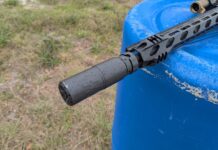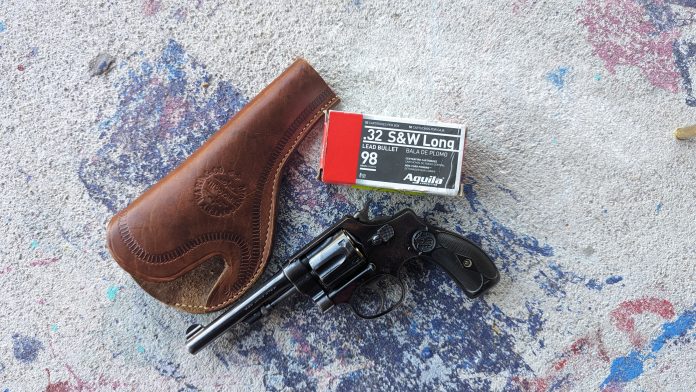
One of the cool things about guns is that if you get bored of polymer frame 9mms, then you can move into shotguns. Inside of shotguns, we got slug guns, double barrels, semi-autos, and more. I recently moved into shooting more revolvers. Part of that has been researching the history of old revolvers, which is basically an excuse to buy old revolvers. Believe it or not, revolvers from the early to mid-1900s are pretty damn cheap. Well, they are cheap if you buy one in a not-so-popular caliber, and that’s how I discovered and fell in love with .32 S&W Long.
It was a little range time with a S&W 1905 5th change that convinced me that there was more to this round than meets the eye. What I expected was a lower-powered, rare, and expensive caliber. I’d shoot fifty rounds from the box I got with the gun and enjoy it, but I’d never really think about it again. The S&W 1905 would be a wall hanger. Yet… that’s not what happened.
What happened was pure enjoyment. I loved shooting the caliber and the gun and started a deep dive into the .32 S&W Long and figured out that we were all missing out on such a great round.
The History of the .32 S&W Long
Smit and Wesson released the .32 S&W Long in 1896 and released the round alongside S&W’s first-hand ejector. This revolver set up every other S&W revolver they would ever make. Originally, the round was loaded in black powder, but in 1903, it was swapped to smokeless powder. The round’s most famous user was the NYPD, who used it in Colt New Police revolver. At this point, Theodore Roosevelt was the police commissioner.
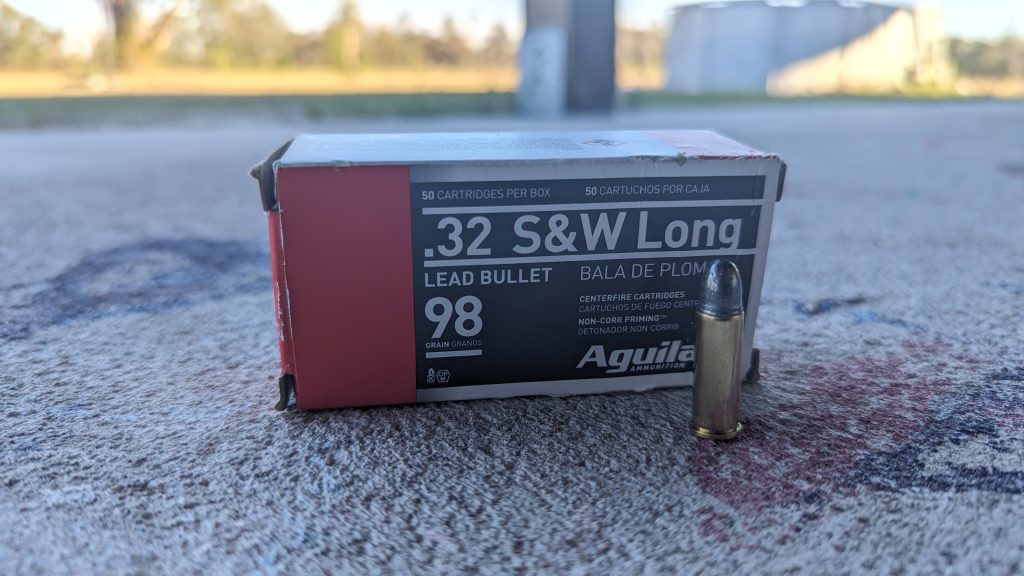
Mr. Roosevelt was famously a fan of firearms, and was well known for being a soldier and hunter, and carried an FN 1900 as his chosen self-defense firearm. He knew his guns and adopted the little .32 S&W long due to its reputation for excellent accuracy. Beyond the NYPD, the cartridge saw some success with other Northeastern Police Departments.
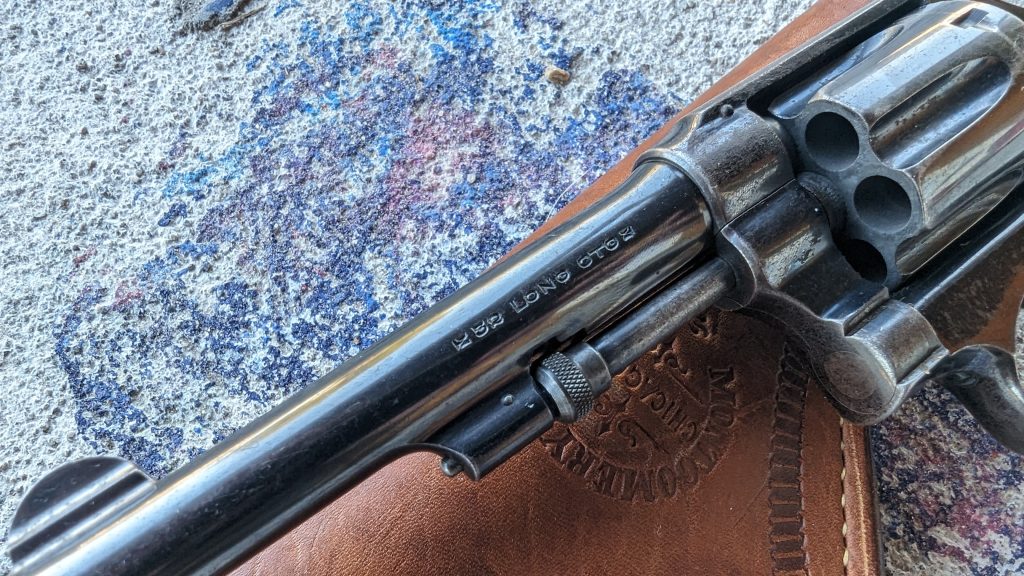
Where it really shines and continues to shine is in competition pistols. Believe it or not, the .32 S&W Long continues to be used in high-end competition pistols made by Pardini, Benelli, Hammerli, Walther, and more. These specific rounds are complete flat cutters to reduce the overall length to fit in semi-auto actions. The accuracy of the round can’t be overstated. It continues to blow past other options.
The Benefits of the .32 S&W Long
We’ve mentioned accuracy, and it is an accurate round. I’m not six-gun fiend. I’m an enthusiastic amateur at best. With that S&W M1905, I was able to ping a 10-inch gong six out of six times at 25 yards. It’s not a big gun, and the sights are super simple, but the round is very forgiving. Hearing ding made me feel pretty good about my ability to shoot a revolver.
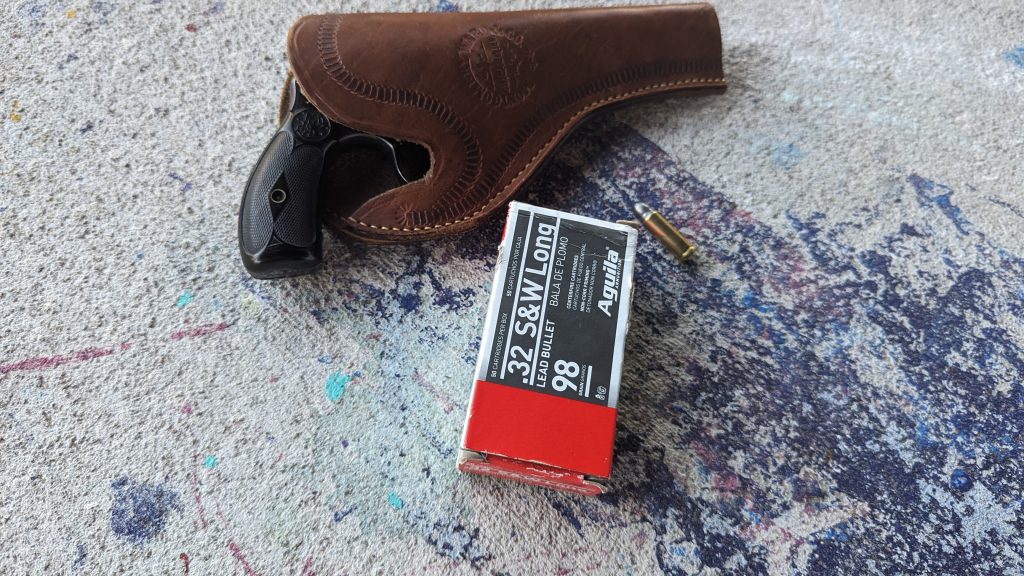
Another benefit is the small size of the round and case. It leaves enough room to fit six rounds in a cylinder that would usually accommodate a mere five .38 Special rounds. One extra round might not be much, but unless my math is wrong, six is more than five, and when it comes to ammo, more is always better.
The little round also has very little recoil. Another reason I fell in love with shooting it was the soft pop of the recoil. It was unassertive and greeted you like an old man’s handshake. You won’t feel a pinch of pain, and when tossed in a small revolver, that can be quite nice.
Is It Self-Defense Capable?
That’s the real question. Plenty of turn of the century revolver cartridges faded away simply because they weren’t very well suited for self-defense. We typically want a cartridge that can penetrate through 12 to 18 inches of properly calibrated ballistic gel. This ensures the round can reach deep enough to hit something vital.

If the caliber can’t hit the off switch reliably, we usually move on. I looked into it, and Terril Herbert, over at Guns.com has tested the cartridge from an old Iver Johnson revolver. He used some simple 88-grain rounds, and they made it through four layers of denim, and all landed between 14 and 18 inches of ballistic gel.
That’s not bad, and that was using a rather anemic target load. There is no reason you couldn’t amp the round-up a little with modern guns and add a little velocity alongside a modern projectile for good penetration and expansion.
What About the .327 Federal Magnum?
I have only fired about 12 rounds of .327 Federal magnum in my life. It’s all been fired from a Ruger LCR. I found it pretty comfy, but it was loud, with lots of concussion. Luckily, the .327 Federal Magnum can fire .32 S&W long safely and reliably. There is a little bullet jump from the cylinder to the barrel due to overall length differences, but I doubt it will degrade accuracy much.
I don’t have much of a use for carrying this caliber as a serious defensive revolver, but I can’t help but feel it would be a great option for those who are recoil-sensitive. I don’t expect the .32 S&W Long to be the next big thing, but it does seem to be a missed opportunity for small revolvers and recoil-sensitive shooters.



